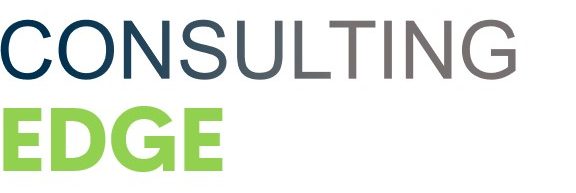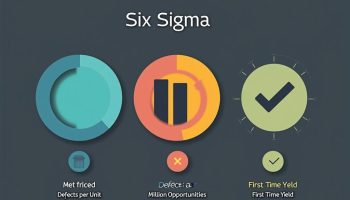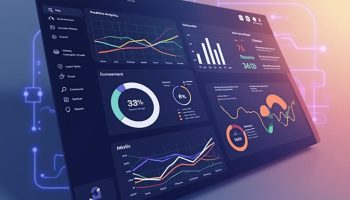Dashboard and scorecard, two standard tools in business intelligence, are frequently used to support performance management initiatives. A dashboard and scorecard should be selected based on the purpose for which will be used the types of data will be monitored. And, the emphasis placed on long-term goals and strategy rather than short-term goals.
Some users believe the two tools are interchangeable because visualization and key metrics are frequently employed. Your objectives largely influence the selection of a tracking tool. These days, dashboards and scorecards are the critical reporting tools used by the vast majority of businesses to communicate information.
Furthermore, it depends on the metrics that are tracked and the objectives associated with them. The importance of selecting one sort of tool over another is critical. If you are unfamiliar with the advantages of each form of instrument.
What is a dashboard?
Essentially, a data dashboard is a data management tool that displays key performance indicators (KPIs), statistics, and other critical data elements in an easily understandable format. This allows you to keep an eye on the overall health of a company, department, or specialized procedure.
A dashboard links to your files and attachments and other services and APIs, which are all running in the background. It displays the information in the form of tables, lines, bars, and gauges on the screen’s surface.
It is the most effective approach to keep track of a large number of various sorts of data. Since it provides organizations with a central location to view and assess their performance. Real-time monitoring minimizes the number of hours spent evaluating data and the length of time spent communicating, which was previously a problem for enterprises.
What is a scorecard?
Using a scorecard to guarantee that all of the company’s objectives are on the same page. This is a valuable approach to think about metrics management and visualization in general. To analyze an organization’s overall vision and business strategy, the scorecard will often look at crucial indicators based on financial and customer information, as well as fundamental business operations and the ultimate goal of growth, among other things.
Scorecards may be thought of as a way of merging the functionality of dashboards and applications. An integrated framework for general management responsibilities will include a system for keeping track of the activities associated with the performance of such obligations.
You can update or modify scorecards on a regular basis to keep track of what is going on in the business. While also ensuring that the actual statistics and goals indicated are compatible with what is being reported.
Dashboard and scorecard: What are the Differences?
| Dashboard | Scorecard |
| It’s easier to compare different financial indicators on a dashboard because they’re all shown on the same screen simultaneously. | A scorecard is an effective tool for tracking and monitoring performance. |
| When to use it? | |
| You can use dashboards to get a high-level look at how your business is running. | When you need to get a clear picture of a particular area, scorecards are the best way to go. |
| Time period | |
| On the Time Period Dashboard, you can see how the company is doing right now. | Time Period Scorecards are scorecards that show how well you’ve done over a long period of time, like a year. |
| Performance | |
| Dashboard performance changes are looked at by the people who make the big decisions. | The performance of scorecards is looked at in relation to the company’s goals. |
| Objectives | |
| Dashboards might be a good thing to have around in the short term. | Scoreboards are all about long-term strategic goals. |
| Uses | |
| It is common for lower and medium-level managers to use dashboards to make decisions about the things that happen every day. | A company needs to use scorecards when making strategic decisions. |
| Management | |
| Individual managers help to make operational dashboards. | The use of management scoreboards is based on a well-thought-out management strategy. |
Dashboards vs. scorecards: Which one to choose?
There is no need to pick between scorecards and dashboards when choosing a reporting solution for your organization. When you utilize both at the appropriate times, you may gain a greater understanding of the health and development of your business toward its operational and strategic goals.
When you need to get a clear view of a particular area, scorecards are the best tool to use. The results of a scorecard can help you determine how near or far a team is from reaching their objectives when it comes to fulfilling marketing KPIs or completing their assigned tasks. If you’re searching for ways to improve or streamline a particular process, this can be a valuable tool to have at your disposal.
In situations when you want a high-level overview of the actions of your business, dashboards are an excellent tool. As a result of its ability to hold several reports and datasets in a single area, dashboards are an ideal tool for keeping track of your progress daily.
On the other side, dashboards present a more comprehensive picture of data rather than tracking progress toward specific goals. Therefore, they give a more accurate historical picture of development that can be utilized to make operational decisions that will help your business function more smoothly on a day-to-day basis, allowing you to focus on what you do best.
You don’t have to use separate tools; you may combine them instead. In addition to presenting scorecards and key performance indicators (KPIs), many dashboards also systematically assess progress. There are also scorecards, which may be incorporated into dashboards and provide a single location to view many key performance indicators (KPIs) and the progress they are making.
Parting shot:
It’s easy to tell when people are constantly updating their data in order to get a weekly report. You can use this information to make a strategic dashboard, but they’d want real-time, up-to-date data.
Make sure you know that a dashboard is a great way to show a lot of data and show how your company is progressing toward a specific goal or goal. You can use a scorecard to show how your organization is moving toward your goals and make sure your strategy is in line with those goals, as well.
Having a clear idea of what you want to measure can help you narrow down the options for Dashboard and scorecard solutions and the hybrid area in the middle more quickly.






